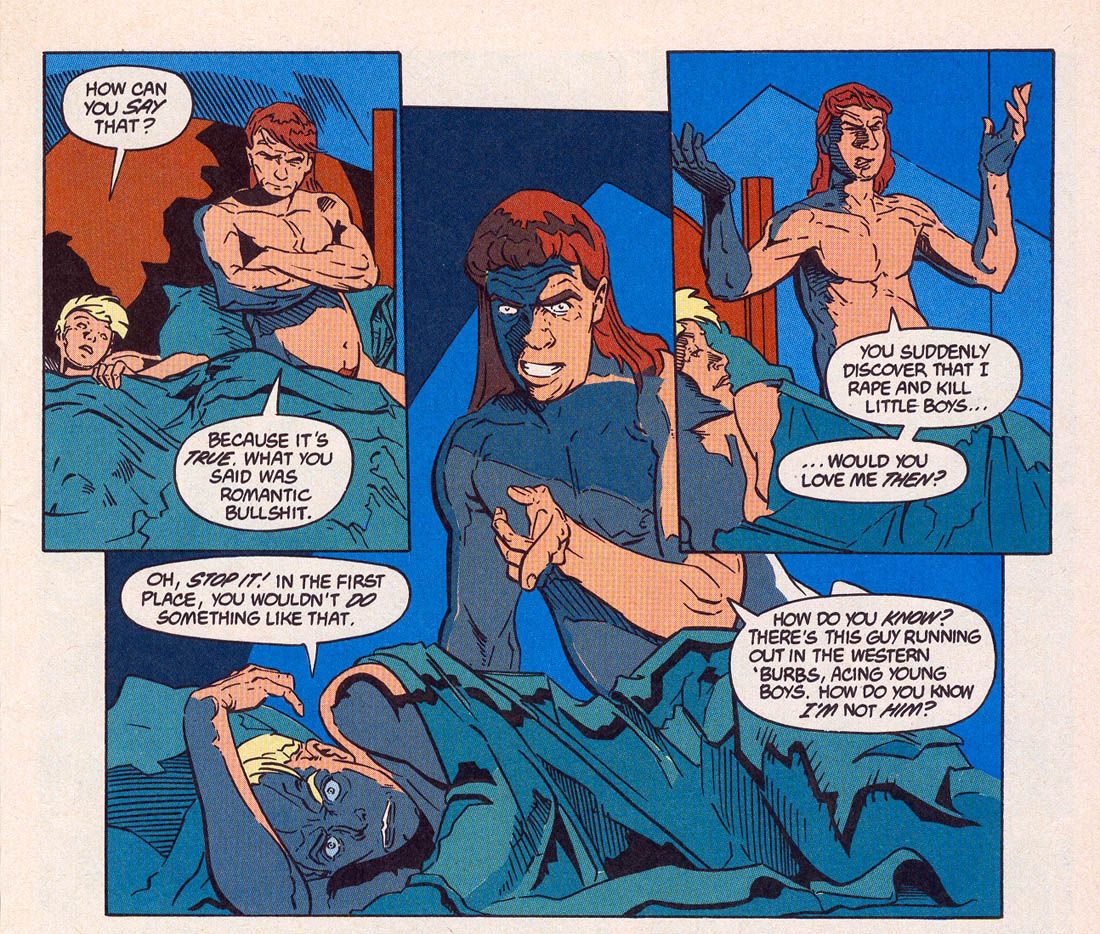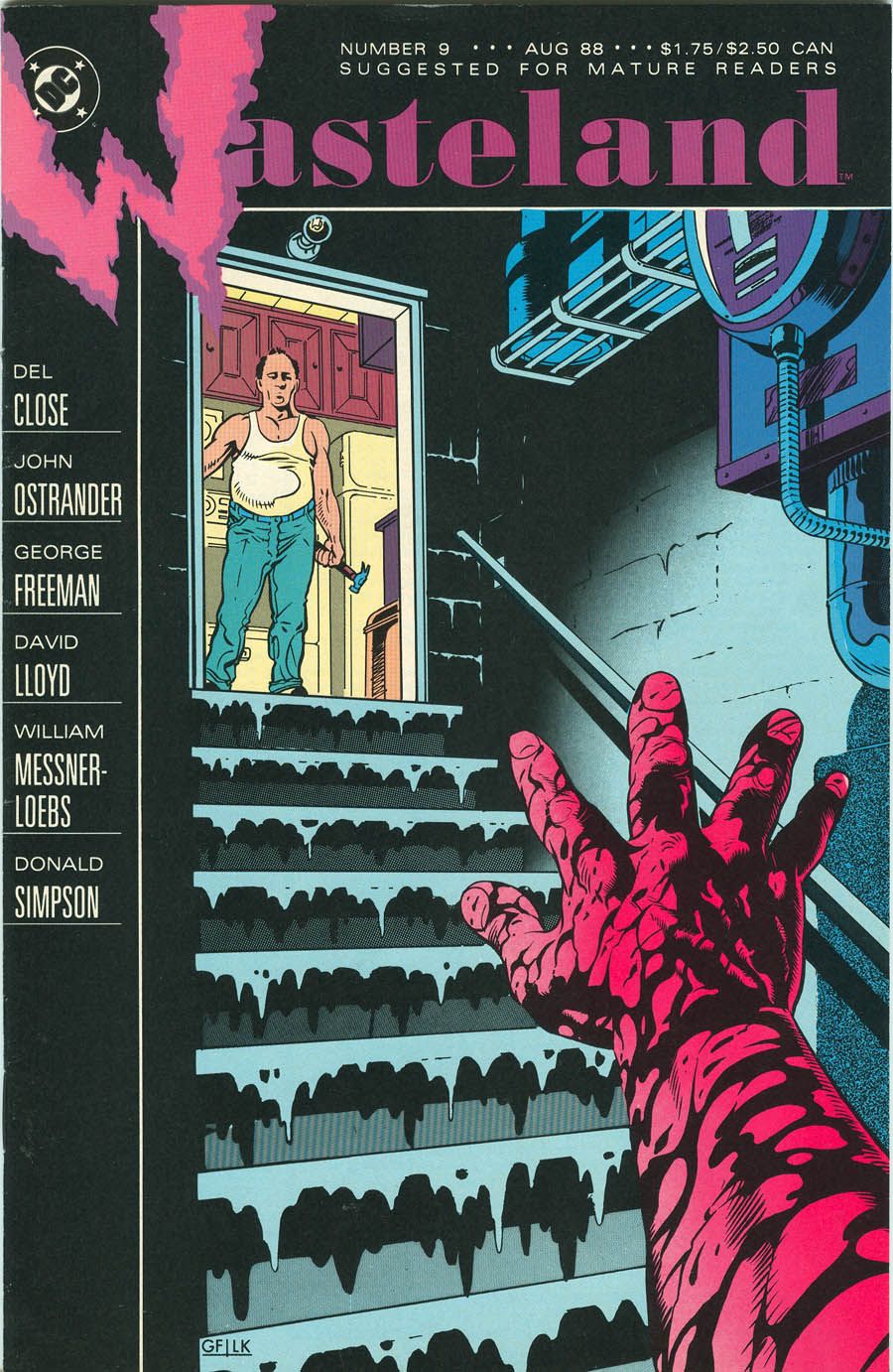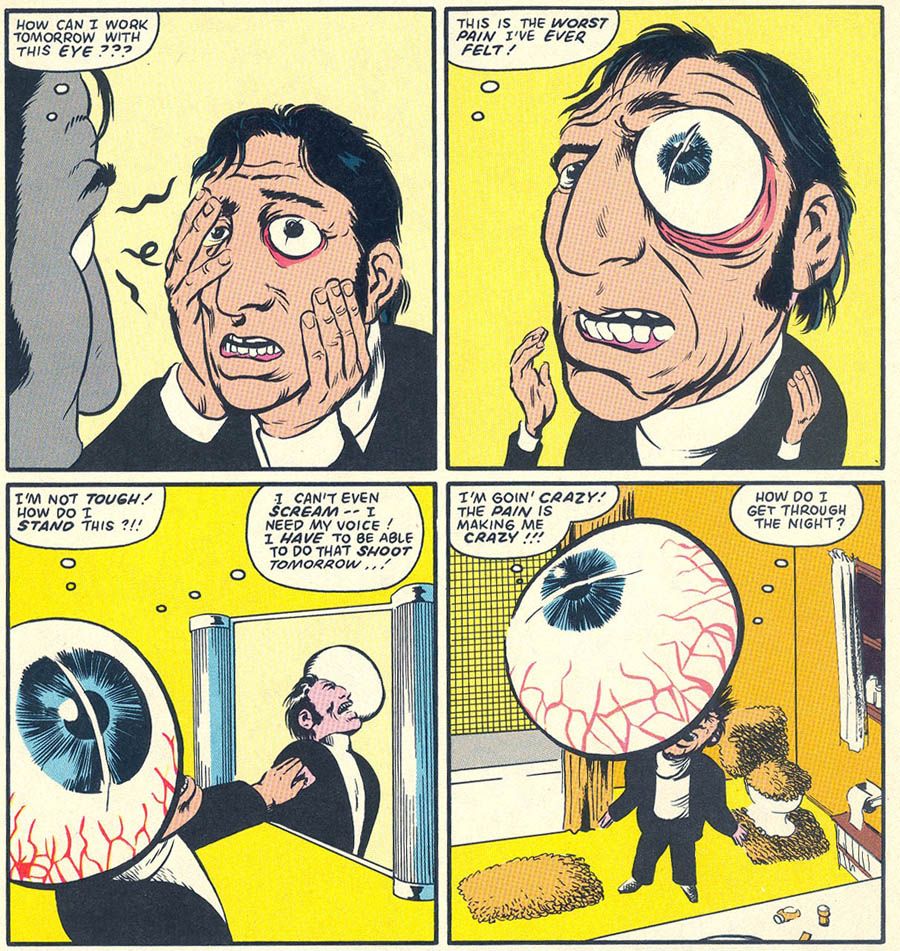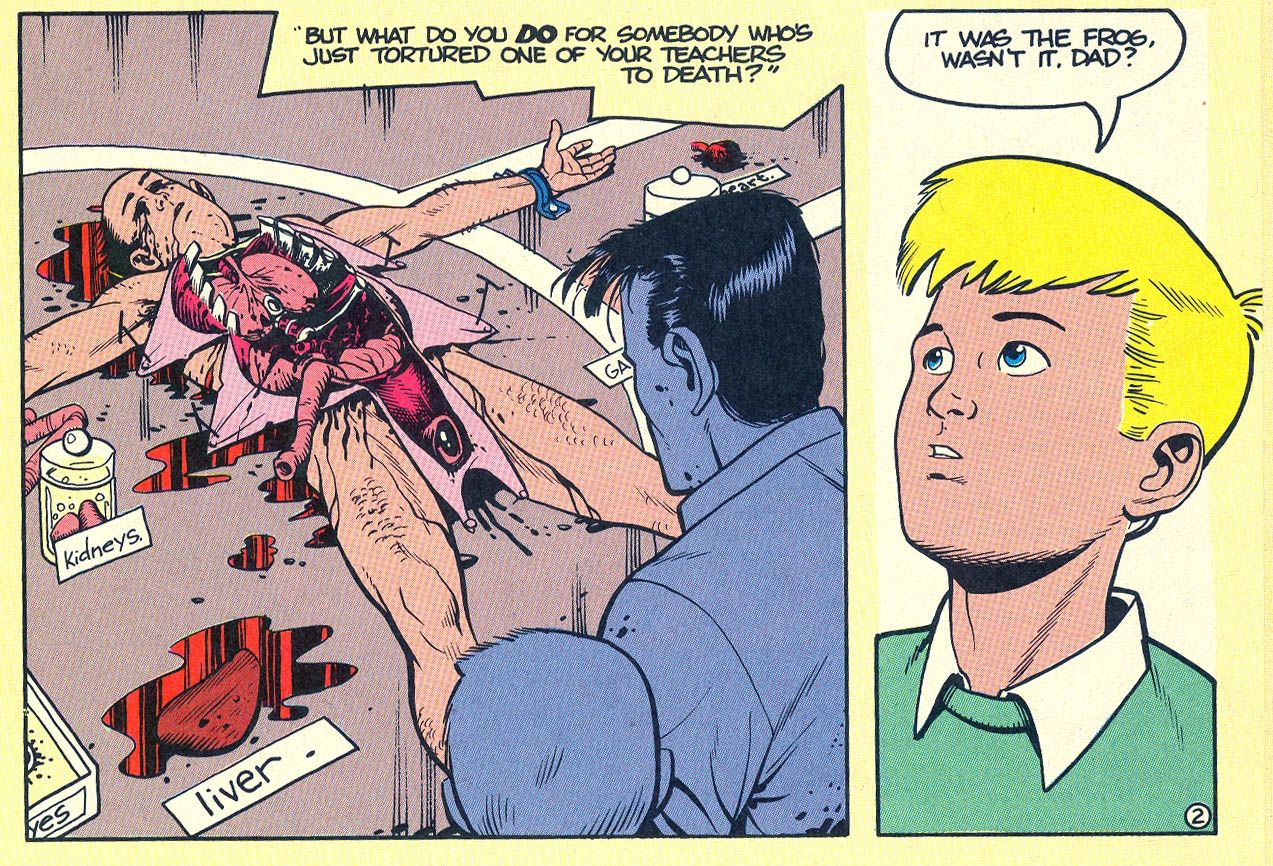Ah DC comics, circa 1987. A wild, heady time. Pre-Vertigo. Pre-Sandman. Watchmen was just wrapping up. Grant Morrison would soon start working Animal Man. Kyle Baker and Andy Hefler were doing crazy things with The Shadow. And the company that Jack and Joe built was flinging whatever it could to the wall to see if it stuck. (anybody here remember Haywire? Or Sonic Disruptors?)
Wasteland was a one of the things they threw. It was ostensibly a horror comic, though it rarely showed much in the way of blood or gore, and generally avoided traditional horror tropes. There were no serial killers here, or zombies or vampires, and no twist endings of the sort patented by TV shows like The Twilight Zone and The Outer Limits.
Which is not to say that it couldn't be incredibly disturbing.
Each issue of the comic contained three stories by either John Ostrander (of Suicide Squad fame) or Del Close. Sometimes they collaborated. The pair, at least in the beginning, had a rotating cadre of artists that they relied upon that mainly consisted of David Lloyd, William Messner-Loebs and Don Simpson, with folks like Ty Templeton and Tim Truman occasionally filling in. One time they even got Joe Orlando.
Now while Ostrander may well be familiar to you, chances are Del Close is not. The late Close was an actor (you may remember him as the crazy preacher in the remake of The Blob) best known for his work in improvisational theater. John Belushi, Bill Murray and Andy Richter were among his students. When he died his last words were supposedly "I'm tired of being the funniest person in the room."
None of which really explains what he was doing in comics or how he hooked up with Ostrander, but still, nice anecdote. And his contributions to Wasteland were usually just that, autobiographical anecdotes, pages allegedly ripped from his often strange, varied life. Like the time he took an auditing session with L. Ron Hubbard. Or the time he put cole slaw in his underpants as a theatrical experiment. Or when he filmed Beware of the Blob! high as a kite on drugs because his cat had torn his cornea open the night before.
The end of his stories would always have a little footnote at the bottom insisting that each tale of his was 100 % true. Or at least mostly true. It soon became something of a running joke.
In between those tales, Ostrander would tell psychologically unnerving stories that frequently edged over into political and social angles and often into outright satire. The first issue featured a drug that would give you the greatest high ever, but would also kill you instantly. Another used the old Matrix "brain in a jar" trick but with a witty Hollywood twist.
But Ostrander would just as frequently eschew fantasy and sci-fi tropes for something more slice of life. In "Heebee Geebeeies," a woman wonders if her husband is a child killer. In Embryo, about a man with a monster for a dad that ends with him smothering his elderly father in the hospital. And in "Dissecting Mister Fleming" a father proves his love for his son by eviscerating his science teacher.
Lloyd, Simpson and Loebs did some of their best work on this series. Their art is full of life, tension and wit. It's kind of sad to think that this is the only home DC could make for such talented, idiosyncratic artists (Loebs' writing career for DC aside).
Eventually the series started to get too jokey and flippant. A lot of the discomfort and terror drained away as reoccurring characters like the Dead Detective (he's got a bullet in his head but he's still aware and lots of surreal things happen to him) kept cropping up. I started to miss the darker stories. When the series finally closed with issue #18 I had long since stopped reading it.
So no, I don't suppose I really need a complete, hardcover, embossed, slipcased Wasteland collection. Still, a nicely packaged greatest hits would do nicely. Certainly with Ostrander suffering from medical problems, any money that can be thrown his way, would be nice. More to the point, in its hey day this was a terrific series, to the point where I'll still find myself contemplating some of its more notable stories twenty years later. It's about time some more attention got thrown its way.





